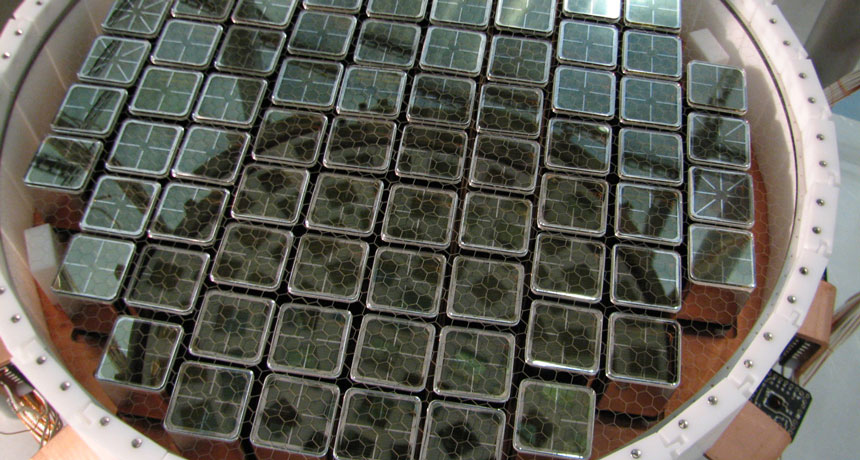Dark matter still missing

Chalk up one more loss for physicists searching for dark matter. Scientists with the XENON100 experiment have largely ruled out another experiment’s controversial claim of detecting dark matter.
XENON100, located in Italy’s Gran Sasso National Laboratory, aims to directly detect particles of dark matter — the unknown substance that scientists believe makes up the bulk of matter in the cosmos (SN: 11/12/16, p. 14).
In their new analysis, published online January 3 at arXiv.org, XENON100 scientists looked for an annual variation in the rate of blips in their detector, a tank filled with 161 kilograms of liquid xenon. Such a signal could be a hallmark of Earth’s motion through a prevailing wind of dark matter particles as the planet makes its yearly jaunt around the sun. Another dark matter experiment at Gran Sasso, DAMA/LIBRA, claims to have found strong evidence of a yearly modulation, but other experiments have failed to replicate the result.
Scientists combed over four years of data for events that could be caused by dark matter interacting with electrons in XENON100. The researchers found no evidence of an annual cycle, contradicting DAMA’s claim.
Dark matter optimists can still cling to a caveat, though: DAMA uses a different detection material, composed of sodium iodide crystals rather than xenon. That might explain the difference between the two experiments. Future experiments will attempt to replicate DAMA’s result using the same material.